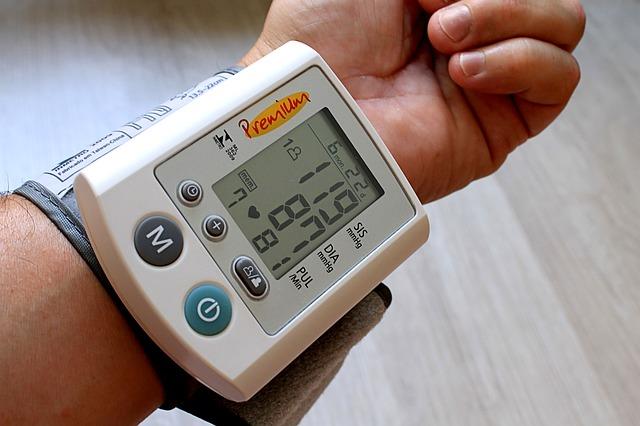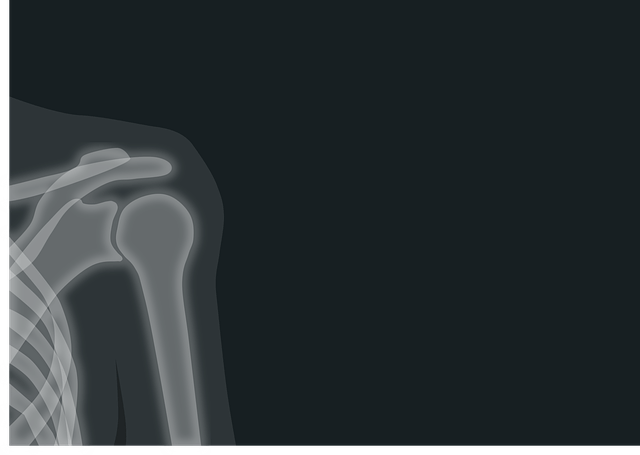After the Adjustment: Taking Care of your Spine
Chiropractic care does not end when you leave the office
Chiropractic adjustment seeks to apply a controlled force to a spinal joint in order to move it back into alignment with the rest of the spine, thus alleviating compression from nearby nerves, correcting the body’s physical function and structural alignment and balancing the muscles in the back. Many people find that they experience significantly less pain and enjoy a greater range of motion immediately after a chiropractic adjustment. By alleviating nerve compression and aligning the spine, significant improvements are made in a person’s range of motion and, thus, flexibility. But what happens when you leave the office?
Keeping Blood Pressure Under Control with Chiropractic
High blood pressure in Houston
Also known as hypertension, high blood pressure is a dangerous condition- constantly elevated levels of blood pressure put strain on the heart, weakening it and impeding its ability to work efficiently. Thus, high blood pressure puts you at elevated risk for potentially fatal diseases and conditions including stroke, sudden cardiac death, heart attack and heart failure. In its early stages, hypertension may not cause any symptoms at all, slowly damaging your body over years, often until it is too late.
How does chiropractic approach high blood pressure?
Helping your Body Heal Itself in Houston
For all but the most serious injuries and diseases, your body has the innate ability to heal itself
Our bodies are amazing and complex structures which contain self-repair mechanisms that keep us functioning day-to-day. Among these mechanisms, our bodies negate cancer cells that are produced, fight off infection, rebuild and repair broken proteins, heal injuries and fight aging to the best of their ability. Because they do so much without our conscious aid, it is important that we help maintain a high level of physical and nutritional support where we can. Chiropractic is an integral part of maintaining this support; read on to find out how.
Chiropractic for maintaining the body’s self-healing mechanisms
Making your Body a More Efficient Machine: Chiropractic for Athletes
Athletes can push further with the help of chiropractic
Athletes are a breed of people constantly seek improvement; improvement in performance begins with specialization of the body. In this endless pursuit of perfection, the athlete’s body develops the strength and flexibility necessary to excel and we believe that you can always use a helping hand. Studies show that athletes who receive regular chiropractic treatment suffer fewer injuries, recover quicker and enjoy a comparative advantage over athletes who don’t use chiropractic. How does this work?
Addressing Shoulder Pain in Houston
Take a moment to appreciate your shoulder joints, some of the most active in your body.
When most people say or think, “shoulder,” they are referring to the glenohumeral joint, which allows for interface between the scapula and the head of the humerus; this ball and socket joint interacts with three other joints to make up the shoulder complex. Along with these joints is an army of muscle, tissue and ligaments which add stability and strength to the shoulder. When you take a moment to think about all the motions you put your shoulders through on a daily basis it becomes clear: we use our shoulders for everything. We should therefore place store by keeping our shoulders in good health.
Shoulder instability
Because the shoulder involves so many moving parts and sensitive tissues, and because we move it so much, this joint is particularly prone to injury. Shoulder instability refers to some form of dysfunction between all the working parts of the shoulder; the clearest example of this is when the ball partially or fully separates from the socket in the joint, known as subluxation (partial) or dislocation (full). Shoulder instability is the direct cause for many symptoms involving pain and loss of motion.
Chiropractic for shoulder pain in Houston
If you have been feeling tenderness and limitations in motion in your shoulder joint, it is important to get a clear diagnosis of the cause. At our office in Houston, we begin with a thorough physical assessment and medical history to get an accurate diagnosis of your shoulder pain. We utilize chiropractic techniques such as adjustment and mobilization to maintain spinal alignment and ensure proper nerve signalling to the shoulder. We can then help to strengthen the muscles and tendons which surround the joint in order to prevent any injury from recurring. If you are suffering from shoulder pain, wait no longer to get an accurate diagnosis by calling our office in Houston today.
The Mystery of Myofascial Pain
Myofascial pain: what is it and why do I not want it?
At its core, myofascial pain is a chronic, pain-causing condition that affects the body’s soft tissues. The fascia is a layer of tissue that covers our muscles and spreads without interruption throughout our bodies. When this tissue is injured, whether acutely or by repetitive trauma, it often tightens and contracts. This can put pressure where you don’t want it: on nerves, muscles and organs. The point where the injury occurs is often the epicenter of pain, and we refer to it as the trigger point; but other, seemingly completely unrelated, areas of your body can experience pain in what is known as referred pain. Because the fascia spreads throughout our bodies without interruption, pain can be experienced far away from the source of the injury.
Chiropractic has many techniques for dealing with myofascial pain in Houston
Trigger points can be detected because, rather than being a source of scar tissue that develops after injury, they are areas of increased sensitivity in the muscle. When pressure is applied here, pain is often felt in an unrelated area, hence the referred pain and hence the necessity for determining the true point of injury. After diagnosing your trigger points, we move on to treatment which includes:
- Myofascial release
- Active Release Technique
- Heat and ice
- Electric muscle stimulation and ultrasound
By applying manual pressure to the trigger points, we encourage the muscles to relax and the trigger point to disappear. Specific exercises relating to stretching and strengthening can be used at home to improve your symptoms from myofascial pain.
Treat your myofascial pain and release trigger points in Houston
Because myofascial pain is undetectable through x-ray, MRI and CT scanning, it is most often determined through medical history and physical examination. We use our hands to find whether trigger points in your muscle are the true source of your pain. From here, we move forward with a plan for treatment. If you are interested in finding out more about how we help you treat your myofascial pain in Houston, give our office a call to schedule an appointment today.
Frozen Shoulder in Houston
Finding A Life with Arthritis in Houston
Arthritis is widespread throughout America
While the term arthritis incorporates multiple conditions, the pain at one end of the spectrum can be so severe that simple tasks are rendered impossible. The two major subsets of arthritis are:
- Osteoarthritis: a degenerative disorder, mostly found in elderly populations, which breaks down cartilage from the joints and causes them to rub against each other, creating pain and limiting movement. Spinal osteoarthritis involves the spine’s facet joints.
- Rheumatoid arthritis: an autoimmune disorder that involves inflammation of the joint tissues, causes pain, lowers red blood cells and reduces range of motion. While RA is not considered hereditary, a family history of RA is linked to increasing your risk for the disease.
- In both cases, the body will attempt to replace the lost cartilage by creating extra bone known as osteophytes, or bone spurs, in the joint space.
In America, as many as 8 in 10 adults over the age of 55 will suffer from arthritis
Everyone is affected differently and in different parts of the body. But what all arthritis sufferers share is an impingement on their lifestyle. At Holmes Chiropractic, we are ready to help you manage your condition and mitigate many of its worst symptoms!
Finding relief from arthritis in Houston
At our office in Houston, we have years of expertise detecting and treating conditions such as rheumatoid arthritis and osteoarthritis; because they are primarily musculoskeletal problems involving the degeneration of joint spaces, there are many options available to people who suffer from arthritis. Through chiropractic adjustment, attention to exercise and arthritis-appropriate activities, you can find a way to live with your condition! We can help you live a life with less pain, better range of motion and more strength despite your condition; give our office in Houston a call to schedule an appointment today!
Banish Back Spasms in Houston
Breaking down a back spasm
A back spasm is an episode of uncontrollable tightening of a muscle. By nature they are sudden and involuntary and are often brought on by strain and overuse or as a symptom of an injury or disorder. Heavy lifting, for example, is a common cause of back spasms because it is an activity that loads excessive strain to the ligaments and muscles in the lower back.
Back spasms are a symptom
Back spasms are often caused by irritation to nerves which lead in and out of the spinal cord; a compression of the nerve root can cause sharp pain, or spasm, as the body attempts to send a signal that will prevent motion to stop further harm. The spasm is trying to protect you from causing further injury. When a patient complains of back spasms, there are several “usual suspects,” to check for, including:
- Arthritis
- Muscle or ligament damage
- Ruptured disc
- Degenerative disc disease
- Disc herniation
- Weak core muscles
- Other acute injuries
How we treat back spasms at Holmes Chiropractic
At our office in Houston, we seek to heal the condition that is causing your muscle spasms. In turn, this will allow you to return to a normal range of motion and encourage the healing process further. If a misalignment of the spine is causing undue compression to the nerve, we correct this situation with chiropractic adjustment and then work on strengthening key muscles surrounding the injury; strength of the surrounding muscles is a key way to prevent the injury from recurring. Give our office a call to schedule an appointment and stop your muscle spasms today!
Avoiding the Dreaded Running Injury
Why are running injuries so prevalent?
Running is a seemingly innocuous activity, but as many as 1 in 2 runners will incur an injury in a given year. The jarring nature of the sport does take its toll on our joints but a significant amount of injuries can be avoided by applying proper technique and common sense. A large part of the problem begins with a lack of variety: if you are doing the same run every day you are going to create a surplus of stress on certain parts of the body while other parts will suffer from lack of use. Mix up your running routine and try these other tips to keep yourself injury free:
Protect your body while running
- Running surfaces: to combat the monotony and degradation that results from running on concrete, try running on other less abrasive surfaces.
- Pace yourself to determine your ideal cadence: How many times does each foot strike the ground? Optimal cadence is often found around 180 steps (per foot) per minute.
- Adjust when over-striding: A long stride means you strike the ground ahead of your body with your heel. Try to land each step underneath your hips. This is a more efficient way of running that will help distribute forces evenly, contribute to better posture and keep you going for longer.
Chiropractic contributes to good mechanics when running
Posture is another important aspect of running, with an emphasis placed on staying upright, no matter how tired you are. At Holmes Chiropractic, we have years of experience helping runners overcome pain and get back on track. Whether you are nursing an acute injury or looking to improve your body mechanics and become a more efficient runner with less chance of injury, give our office in Houston a call to schedule an appointment today.









